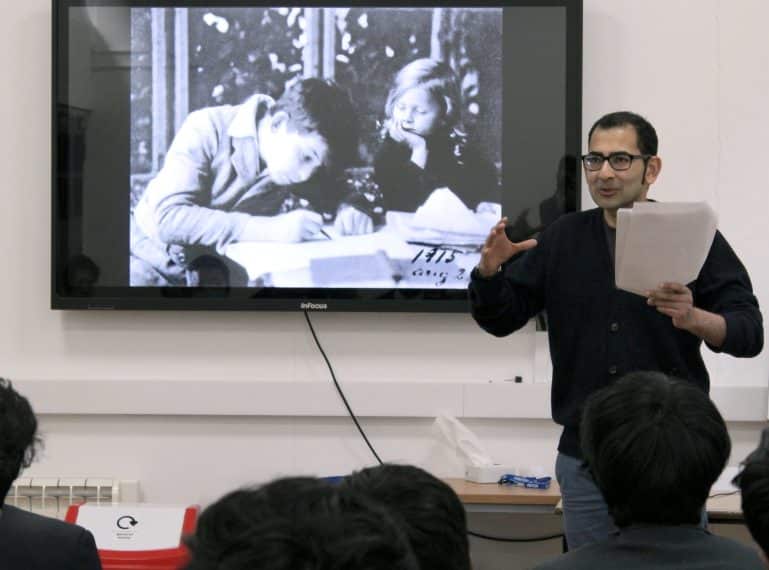
Author, scientist and QE parent Dr Ananyo Bhattacharya gave a talk to senior pupils on his book about John von Neumann, the brilliant Hungarian-American polymath who made breakthroughs in fields ranging from nuclear energy to economics.
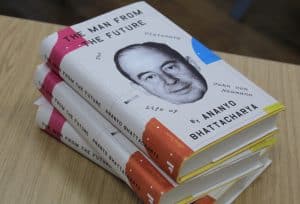 Dr Bhattacharya’s book, entitled The Man from the Future: The Visionary Life of John von Neumann, was named a Financial Times and Times Literary Supplement Book of the Year in 2021.
Dr Bhattacharya’s book, entitled The Man from the Future: The Visionary Life of John von Neumann, was named a Financial Times and Times Literary Supplement Book of the Year in 2021.
His lunchtime talk to A-level Mathematics, Physics and Economics students explored how von Neumann’s advances in mathematics 70–80 years ago continue to inform the science of today.
Headmaster Neil Enright said: “We are grateful to Dr Bhattacharya, as a QE parent, for coming in to School to share his expertise and to inspire our senior boys. It is great that we can draw upon different constituencies within the Elizabethan community, including parents and alumni, to enhance the educational experience offered here.”
Dr Bhattacharya, whose son, Callistus, is in Year 7, is a science writer who has worked for The Economist and Nature, the weekly multi-disciplinary scientific journal. Prior to that, he worked as a medical researcher at the Burnham Institute in San Diego. He has a degree in Physics from Oxford and a PhD, also in Physics, from Imperial College London.
The subject of his book, von Neumann, was born in 1903 to a wealthy Jewish family in Budapest. A child prodigy, he had published two major mathematical papers by the age of 19.
After an early career in German academia during the late 1920s, he took up an invitation to Princeton University in October 1929, becoming a naturalised citizen of the USA in 1937.
In a life of only 53 years – he died of cancer in February 1957 – he made major contributions in subjects including mathematics, physics, economics, computing and statistics.
During World War II, he worked on the Manhattan Project – the research and development that produced the first nuclear weapons – and after the war, he served on the General Advisory Committee of the United States Atomic Energy Commission.
 In his talk, Dr Bhattacharya mentioned the Manhattan Project as well as, inter alia, von Neumann’s contributions to set theory, game theory and the development of the first programmable digital computer.
In his talk, Dr Bhattacharya mentioned the Manhattan Project as well as, inter alia, von Neumann’s contributions to set theory, game theory and the development of the first programmable digital computer.
Head of Library Services Jenni Blackford said: “Dr Bhattacharya delivered a friendly, accessible and vastly informative talk about the life and accomplishments of von Neumann.”
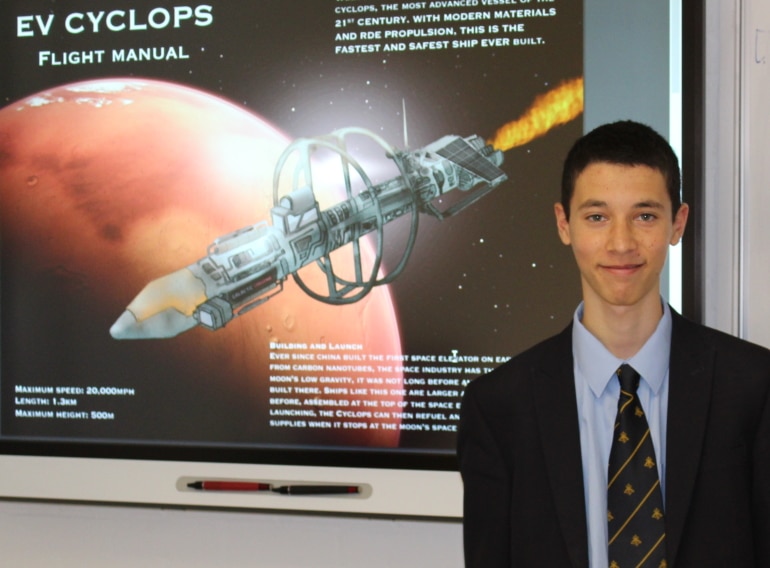
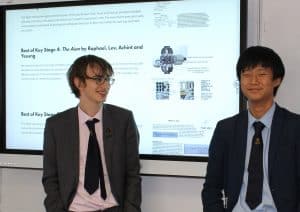 Lev Shafran, Achint Thakkar and Ye-Sung Baek, who are now in Year 12, collectively won the Best of Key Stage 4 Award in the second stage of the
Lev Shafran, Achint Thakkar and Ye-Sung Baek, who are now in Year 12, collectively won the Best of Key Stage 4 Award in the second stage of the 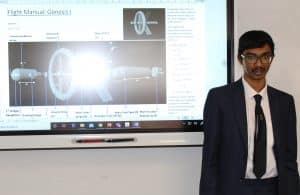 Chair of the Galactic Challenge Aadil Kara, who is also an Old Elizabethan (OE 2010–2017), explained that when Covid-19 forced the cancellation of in-person events, including one due to be held at QE, the organisation had instead launched the digital competition to allow participants to enter from home.
Chair of the Galactic Challenge Aadil Kara, who is also an Old Elizabethan (OE 2010–2017), explained that when Covid-19 forced the cancellation of in-person events, including one due to be held at QE, the organisation had instead launched the digital competition to allow participants to enter from home.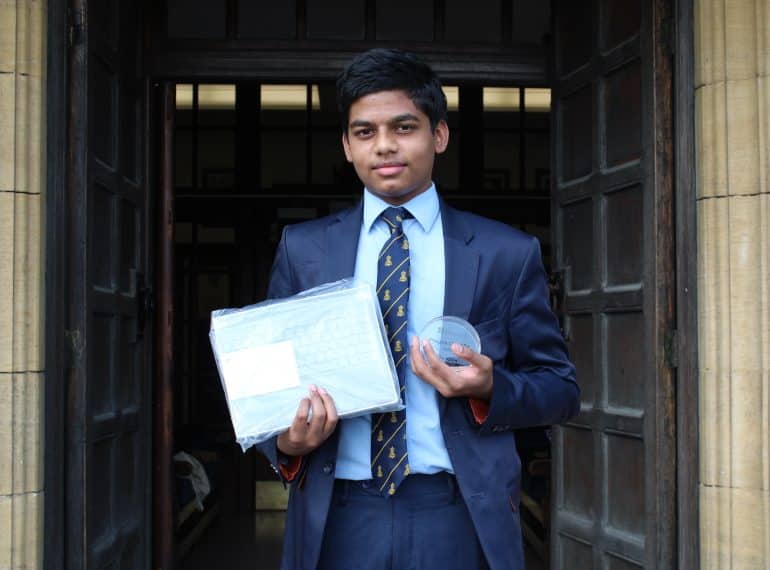
 Congratulating him, QE’s Head of Technology Michael Noonan said: “Ashwin is an outstanding Technology student who has had a tremendous year. Despite the challenges of the school closure, or perhaps even taking advantage of them, he threw himself into many competitions using his vast technological experience. He was successful in eight competitions on a local, national and, with his latest win, international level. He should be extremely proud of his achievements this year, and he undoubtedly has a bright future ahead of him!”
Congratulating him, QE’s Head of Technology Michael Noonan said: “Ashwin is an outstanding Technology student who has had a tremendous year. Despite the challenges of the school closure, or perhaps even taking advantage of them, he threw himself into many competitions using his vast technological experience. He was successful in eight competitions on a local, national and, with his latest win, international level. He should be extremely proud of his achievements this year, and he undoubtedly has a bright future ahead of him!”
 The team, who are all from the same Year 9 Pearce form group, took the Innovation Award in the Galactic Challenge One Small Step competition with their design for a vehicle to explore the Moon’s surface in 2030 in preparation for establishing a human settlement there.
The team, who are all from the same Year 9 Pearce form group, took the Innovation Award in the Galactic Challenge One Small Step competition with their design for a vehicle to explore the Moon’s surface in 2030 in preparation for establishing a human settlement there.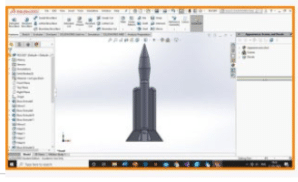 Entrants were asked to produce a design for a vehicle that would be home to four astronauts during a six-month mission, taking into account factors such as how electrical power would be provided and what would be needed to support the astronauts’ living conditions.
Entrants were asked to produce a design for a vehicle that would be home to four astronauts during a six-month mission, taking into account factors such as how electrical power would be provided and what would be needed to support the astronauts’ living conditions.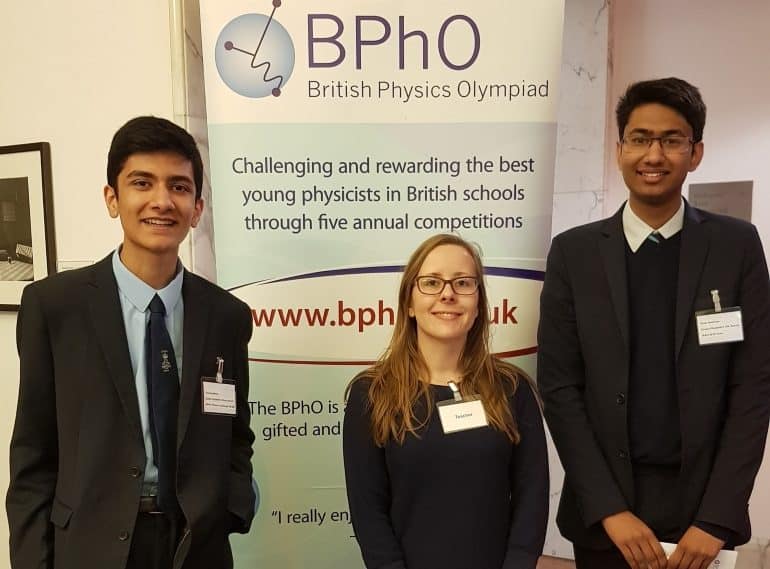
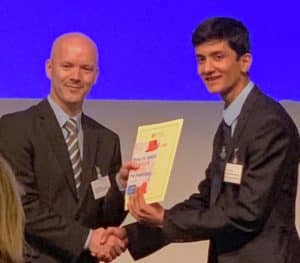 Year 11’s Tanishq Mehta was a gold award-winner in this year’s British Physics Olympiad GCSE Physics Challenge, in which his performance placed him within the top five of some 6,000 competition entrants nationwide.
Year 11’s Tanishq Mehta was a gold award-winner in this year’s British Physics Olympiad GCSE Physics Challenge, in which his performance placed him within the top five of some 6,000 competition entrants nationwide.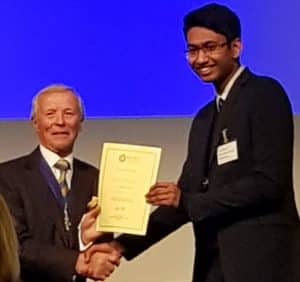 e Olympiad office at Oxford. Only the top five were invited to the prize-giving.
e Olympiad office at Oxford. Only the top five were invited to the prize-giving.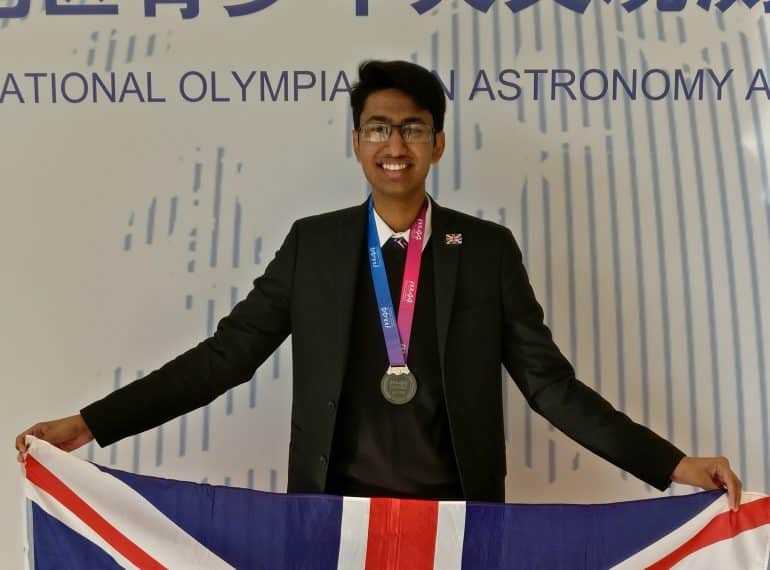
 Headmaster Neil Enright said: “I congratulate Niam on his achievement and on the honour he has brought both to the School and to the country. He combined deep understanding and extensive factual knowledge with profound academic curiosity, thus exemplifying the free-thinking scholarship that we seek to cultivate at QE.
Headmaster Neil Enright said: “I congratulate Niam on his achievement and on the honour he has brought both to the School and to the country. He combined deep understanding and extensive factual knowledge with profound academic curiosity, thus exemplifying the free-thinking scholarship that we seek to cultivate at QE.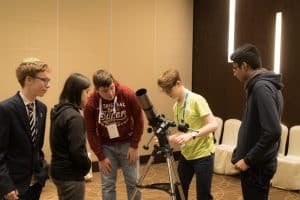 Niam won his place on the five-strong national team after excelling at the British Astronomy & Astrophysics Training Camp at Oxford at Easter. His subsequent training included a spell at Marlborough College’s observatory.
Niam won his place on the five-strong national team after excelling at the British Astronomy & Astrophysics Training Camp at Oxford at Easter. His subsequent training included a spell at Marlborough College’s observatory.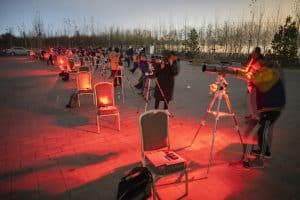 The aspects of the competition itself that stood out most for him were the questions looking into the evolution of the universe and of large-scale structures within it, as well as those which sought to answer the “big questions”, exploring the nexus at which elements of physics and philosophy merge.
The aspects of the competition itself that stood out most for him were the questions looking into the evolution of the universe and of large-scale structures within it, as well as those which sought to answer the “big questions”, exploring the nexus at which elements of physics and philosophy merge.